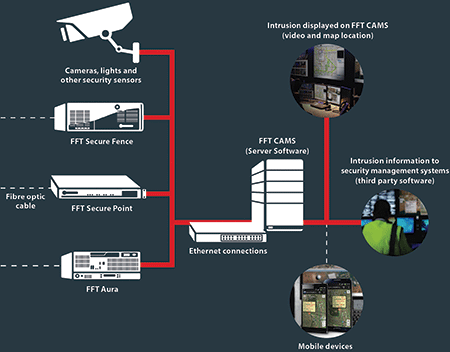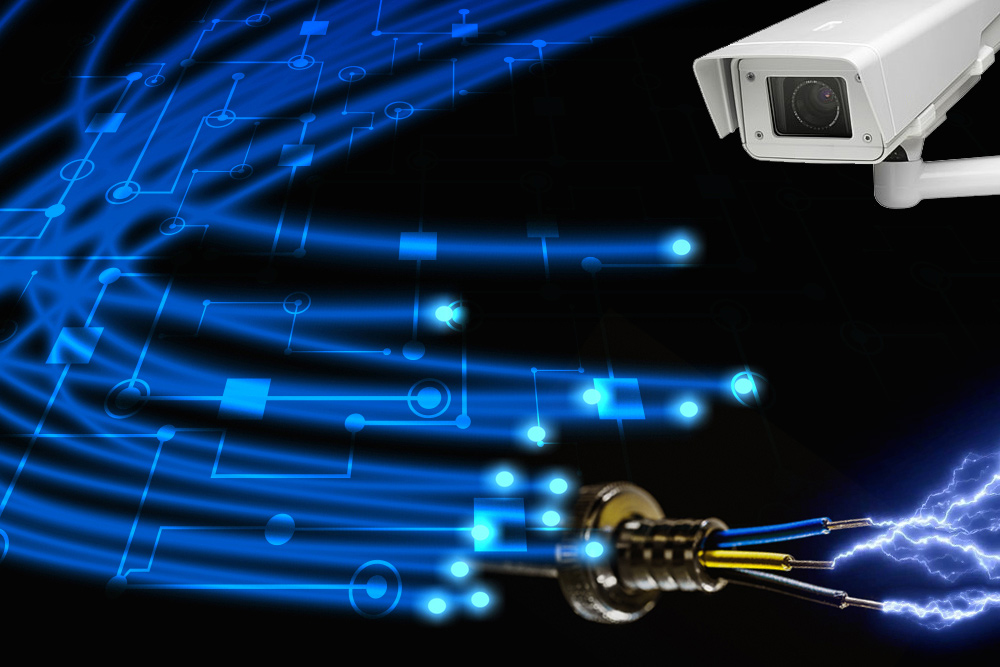Top Reasons a Fiber Security System Outperforms Traditional Security Networks
Top Reasons a Fiber Security System Outperforms Traditional Security Networks
Blog Article
Why Fiber Optic Safety Solutions Are the Future of Defense
The change to fiber optic safety and security systems marks a substantial development in the realm of protection, driven by their phenomenal data transmission capabilities and durability to outside disturbances. These systems not only promote faster and much more reliable interaction but additionally offer a cost-effective option with reduced maintenance demands. As the landscape of safety and security develops together with emerging modern technologies such as AI and IoT, the potential for optical fiber to enhance and redefine safety infrastructures ends up being significantly apparent. The implications of these developments increase important inquiries about the future of safety and security steps and their efficiency in an ever-changing setting.
Advantages of Fiber Optic Solutions
One of the key benefits of fiber optic systems is their remarkable bandwidth ability, which helps with the transmission of large quantities of data over fars away without substantial loss. This particular is specifically beneficial for security applications that call for the constant tracking and transfer of high-definition video clip feeds, sensing unit data, and various other crucial information. Optical fiber can fit the growing needs of contemporary security systems, ensuring that information stays intact and reliable.
In addition, fiber optic cords are less prone to electromagnetic disturbance, which can be a substantial concern in environments with numerous digital tools. This resistance improves the integrity of the information being transferred, therefore lessening the danger of information breaches or system failings. Fiber optic systems are inherently much more protected than typical copper cords, as tapping into a fiber optic line without discovery is exceedingly difficult.
The sturdiness of fiber optic cable televisions additionally adds to their allure. They are immune to environmental factors such as dampness and temperature fluctuations, minimizing upkeep costs and enhancing system longevity. Generally, these benefits position fiber optic systems as a robust and reliable choice for contemporary protection facilities, making sure dependable and safe information transmission.
Improved Data Transmission Speed

The ability to transfer huge quantities of information rapidly facilitates the smooth combination of high-definition video feeds and progressed analytics. Protection systems can now process and analyze information in real-time, enhancing reaction times and situational recognition. Furthermore, fiber optic connections support longer transmission ranges without destruction of signal high quality, making them suitable for expansive protection networks.
The boosted speed of fiber optic systems not only enhances the efficiency of safety operations however additionally lowers latency. This is especially crucial in critical situations where timely decision-making can stop security breaches or minimize possible threats. As organizations continue to focus on safety and security and performance, the need for quick and trustworthy information transmission will unquestionably solidify fiber optic systems as a keystone of modern safety facilities.
Resistance to Disturbance
Fiber optic safety systems constantly show phenomenal resistance to electromagnetic interference, a critical advantage in atmospheres vulnerable to electronic sound. Unlike traditional copper cables, which can be adversely impacted by electromagnetic fields, superhigh frequency interference, and various other types of electrical disruption, fiber optic cords make use of light to send information. This inherent residential or commercial property ensures that the signals remain clear and unchanged, despite surrounding digital activity.
Making use of glass or plastic fibers in fiber optic innovation creates a barrier versus interference, enabling trustworthy data transmission also in tough situations such as commercial facilities, city locations with high digital traffic, or places near radio towers. This particular substantially decreases the chance of signal deterioration or loss, making fiber optic systems specifically suitable for safety applications where honesty and accuracy of information are critical.
In addition, this resistance to interference improves the total efficiency and reliability of security systems, making certain that monitoring and alert systems work flawlessly. In a world where safety and security is progressively intimidated by advanced innovations, the strength of fiber optic systems stands out as a critical function, enhancing their status as a necessary part of modern-day security infrastructure.
Cost-Effectiveness In Time
Considerable price financial savings can be attained over time with the implementation of fiber optic security systems. While the initial investment may seem higher compared to conventional copper-based systems, the long-term Full Article financial benefits become obvious with decreased operational and maintenance costs (fiber security). Fiber optic wires are naturally more durable and much less at risk to ecological elements, which translates to decrease substitute and repair expenditures over their life expectancy
Moreover, fiber optic systems call for less power to run, which even more decreases power costs. Boosted data transmission capacities permit less repeaters and amplifiers, lessening equipment financial investment and enhancing setup procedures. The scalability of these systems likewise adds to cost-effectiveness, as companies can broaden here their security facilities without incurring significant extra expenses.
Another variable to consider is the boosted efficiency in tracking and feedback abilities that optical fiber supply. Boosted real-time information transmission can bring about quicker case reaction times, potentially mitigating losses and obligations connected with protection violations. Altogether, the long-lasting advantages of fiber optic protection systems not only validate the preliminary expenditure yet additionally place them as a monetarily prudent choice for organizations looking for durable defense remedies.

Future Advancements in Security
Advancing modern technologies are set to revolutionize safety systems, incorporating expert system (AI) and artificial intelligence to improve danger discovery and reaction abilities. These developments will certainly allow safety systems to examine vast amounts of data in real-time, identifying patterns and anomalies that show potential threats. This positive technique will certainly allow much faster decision-making and extra effective event actions.
Furthermore, the unification of the Web of Points (IoT) is paving the means for interconnected safety tools, supplying thorough security and surveillance. Smart sensing units can pass on details concerning ecological adjustments, while automated signals can alert safety workers promptly of dubious tasks.
In addition, the advancement of biometric innovations will even more bolster security mechanisms. Facial acknowledgment, fingerprint scanning, and retina identification are ending up being much more sophisticated, offering layers of verification that are hard to bypass.
Verdict
Finally, fiber optic safety and security systems represent a substantial development in protection technology, supplying unmatched data transmission speed, resistance to electro-magnetic interference, and long-term cost-effectiveness. As the need for advanced security remedies continues to expand, the combination of fiber optics with emerging innovations such as AI, IoT, and biometrics will certainly additionally enhance protection facilities (fiber security). The mix of these developments will ensure an extra protected and receptive atmosphere, strengthening fiber optics as a foundation continue reading this of future security systems
Report this page